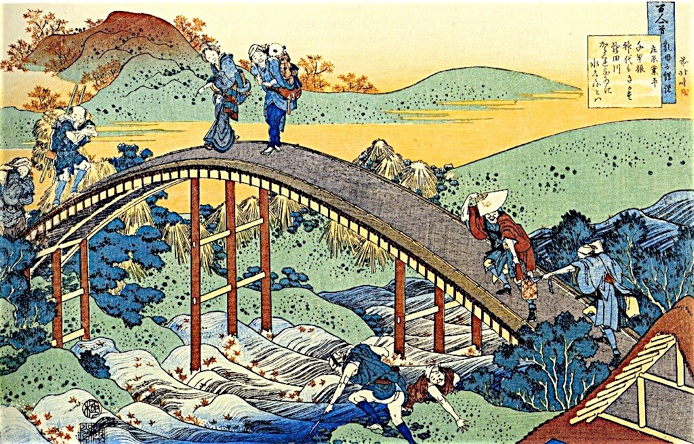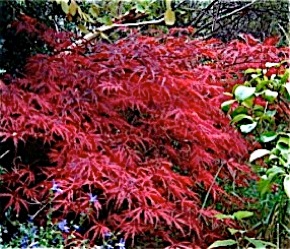在原業平朝臣


ちはやぶる
神代も聞かず
竜田川
からくれないに
水くくるとは
ありわらのなりひらあそん
ちはやぶる
かみよもきかず
たつたがわ
からくれないに
みずくくるとは
Ariwara no Narihira
Even when the gods
Held sway in ancient days,
I have never heard
Of water dyed as crimson
As the Tatsuta River.
Ariwara no Narihira, sometimes with the title ‘Ason’ added, (825 - 880) was a waka poet and aristocrat. Traditionally he was considered the model for the hero of Tales of Ise, which contains many of his waka and whose hero was actually an anonymous person but most of whose love affairs could be attributed to Narihira. He has been traditionally regarded as the epitome of the beau homme in Japanese culture. It is believed he was one of the men who inspired Murasaki Shikibu when she created Hikaru Genji, the hero of the Tale of Genji, especially in the aspects of her story concerning forbidden love between a high ranked woman and a member of the court.
Karakurenai is a particular red colour (#e4052d), usually translated as crimson or scarlet:
The Tatsuta River, Dragon Field or also Autumn River, flows through the southern part of the Ikoma Valley, between the Ikoma mountains and the Yata hills. Long famous for its red maple leaves, it was a popular topic in poetry.
In the Hokusai print above, one man is climbing out of the river his clothes all dyed crimson, which makes him the laughing-stock of the passers-by.
Shogun Iyenari once invited Hokusai to compete with another artist who practiced more traditional brush stroke painting. Hokusai's painting, created in front of the Shogun, consisted of painting a blue curve on paper, then chasing across it a chicken whose feet had been dipped in red paint. He described the painting to the shogun as a landscape showing the Tatsuta River with red maple leaves floating in it, winning the competition.
Hokusai


Acer palmatum, iroha momiji, in my garden


